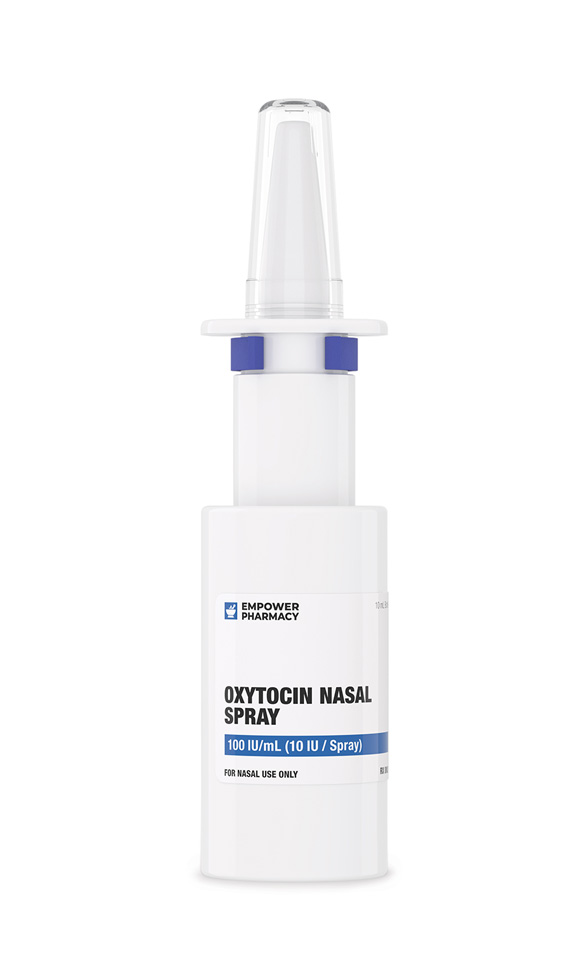- Description
- Reviews (0)
- Store Policies
- Inquiries
Description
Overview of Oxymetholone Capsules
-
Dosage Strengths of Oxymetholone Capsules
- 10 mg
25 mg
50 mg
Oxymetholone is an oral anabolic steroid. Oxymetholone is used for the treatment of anemias including acquired aplastic anemia, congenital aplastic anemia, myelofibrosis, and hypoplastic anemias associated with myelotoxic drug administration. Oxymetholone has also been studied for the treatment of HIV-wasting. Oxymetholone was FDA approved in January 1972.
Oxymetholone is an anabolic steroid with androgenic properties. Oxymetholone stimulates the production and urinary excretion of erythropoietin in anemias due to bone marrow failure and promotes erythropoiesis in anemias caused by deficient red cell production. Oxymetholone may also promote weight gain due to its androgenic effects and has been useful in treating HIV-associated wasting.
Anabolic steroids, such as oxymetholone, may suppress clotting factors II, V, VII, and X and increase prothrombin time.
Oxymetholone is contraindicated in male patients with breast cancer or prostate cancer. It is also contraindicated in female patients with breast cancer and hypercalcemia because androgenic anabolic steroids may stimulate osteolytic resorption of bone. Monitoring of urine and serum calcium levels is recommended in women with disseminated breast cancer.
Use is contraindicated in patients with severe hepatic disease or dysfunction. Peliosis hepatis, some cases resulting in life-threatening liver failure, has been reported. Liver tumorigenicity, including benign tumors and fatal malignant tumors (e.g., new primary malignancy), has also been reported. Discontinue oxymetholone in patients who develop peliosis hepatitis, liver cell tumors, or signs of hepatic dysfunction as withdrawal of the agent may resolve the condition. Due to the potential for hepatotoxicity, obtain liver function tests periodically.
Oxymetholone is contraindicated in patients with active renal disease, specifically, nephrosis or the nephrotic stage of nephritis. Patients with pre-existing cardiac, renal, or hepatic disease may develop edema with or without congestive heart failure with oxymetholone therapy.
Decreased high density lipoprotein and increased low density lipoprotein (hyperlipidemia and hypercholesterolemia) may occur with androgens and anabolic steroids, such as oxymetholone, and may increase the risk of atherosclerosis and coronary artery disease.
Androgen therapy (such as oxymetholone) can result in loss of diabetic control and should be used with caution in patients with diabetes mellitus. Close monitoring of blood glucose is recommended.
Females are at risk for virilization (e.g., voice deepening, hirsutism, acne, clitoromegaly) and menstrual irregularities (e.g., amenorrhea) with androgen anabolic steroid use. Some cases of virilization are irreversible after stopping therapy and concomitant estrogen therapy may not prevent this condition.
Male geriatric patients who receive androgenic anabolic steroids may be at increased risk for developing prostate hypertrophy and prostate cancer.
Androgenic anabolic steroids such as oxymetholone should be used with caution in children because of the potential for adverse effects on bone maturation. These agents may accelerate epiphyseal maturation more rapidly than linear growth in children, an effect that may continue for 6 months after therapy discontinuation. Monitor X-ray scans every 6 months if oxymetholone therapy is used in children. The safety and efficacy in infants and neonates has not been established.
Oxymetholone is classified as FDA pregnancy category X. Fetal harm can occur and use is contraindicated in pregnant women or in women who may become pregnant while on therapy. Women who become pregnant during therapy should be appraised of the potential risk to the fetus. Additionally, impairment of fertility is possible with oxymetholone therapy; oligospermia may occur in males and amenorrhea may occur in females.
According to the manufacturer, it is not know whether anabolic steroids, including oxymetholone, are excreted in human milk. Women who are taking oxymetholone should avoid breast-feeding due to the potential for serious adverse reactions in a nursed infant, including accelerated epiphyseal maturation of bone. Consider the benefits of breastfeeding, the risk of potential infant drug exposure, and the risk of an untreated or inadequately treated condition. If a breastfeeding infant experiences an adverse effect related to a maternally ingested drug, healthcare providers are encouraged to report the adverse effect to the FDA.
Peliosis hepatis has been reported with the use of androgenic anabolic steroids, such as oxymetholone. Cholestatic hepatitis and jaundice may occur with androgen use, some cases leading to hepatic necrosis, hepatic coma, and/or death. Discontinue oxymetholone if drug-induced jaundice is suspected. Reversible changes in liver function tests (LFTs) have been reported including elevated hepatic enzymes (i.e., bilirubin, AST, alkaline phosphatase) and increased bromsulphalein retention. Periodic monitoring of liver function tests is recommended.
Genitourinary adverse events such as bladder discomfort, epididymitis, impotence (erectile dysfunction), oligospermia, penile enlargement, chronic priapism, increased frequency of erections, inhibition of testicular function, decreased ejaculate volume, and testicular atrophy have been reported in men receiving oxymetholone. Clitoromegaly (clitoral enlargement) and menstrual irregularity have been reported in women receiving oxymetholone. Libido increase and libido decrease have been reported in both men and women. Because oligospermia and amenorrhea may occur with oxymetholone therapy, fertility impairment (e.g., infertility) is possible.
Gastrointestinal adverse effects such as diarrhea, nausea, and vomiting have been reported in patients receiving oxymetholone.
Central nervous system adverse effects such as excitability and insomnia have been reported in patients receiving oxymetholone.
Iron deficiency anemia has been reported in patients receiving oxymetholone. Monitor serum iron and iron binding capacity periodically and start supplemental iron therapy if iron deficiency is detected. Also monitor hemoglobin and hematocrit levels periodically (for polycythemia) in patients receiving high anabolic steroid doses. New primary malignancy, specifically leukemia, has also been reported in patients with aplastic anemia who received oxymetholone. The relationship between oxymetholone and leukemia development is unclear as malignant transformation may occur in patients with blood dyscrasias. Benign tumorigenicity of the liver and malignancy of the liver have been reported. Most often the liver cell tumors are benign and androgen-dependent, but fatal malignant tumors have been reported. Withdrawal of the androgen often results in regression or cessation of tumor growth. However, hepatic tumors associated with androgens or anabolic steroids are more vascular than other hepatic tumors and may be silent until life-threatening intra-abdominal hemorrhage develops.
Dysphonia, specifically voice deepening, has been reported in women receiving oxymetholone.
Gynecomastia has been reported in patients receiving oxymetholone.
Hirsutism in women and alopecia, including male pattern baldness in women and postpubertal males, have been reported with oxymetholone therapy.
Acne vulgaris has been reported in patients receiving oxymetholone, particularly in women and prepubertal boys.
Musculoskeletal adverse events including premature closure of epiphyses in children and muscle cramps have been reported with oxymetholone therapy. Prepubertal patients receiving oxymetholone should have x-ray examinations of bone every 6 months to evaluate the rate of bone maturation and epiphyseal center changes.
Chills have been reported in patients receiving oxymetholone.
Edema has been reported in patients receiving oxymetholone. Concomitant use of oxymetholone and adrenal steroids including corticotropin (ACTH) may contribute to the edema. Serum electrolyte retention (e.g., sodium retention, calcium retention, hyperchloremia, hyperkalemia, and hyperphosphatemia) may also occur with oxymetholone therapy. Anabolic steroids may stimulate osteoclasts and cause hypercalcemia in women with breast cancer. Monitor urine and serum calcium in women with disseminated breast cancer and discontinue oxymetholone therapy if hypercalcemia develops.
Serum lipid changes, including decreased high density lipoprotein (HDL) and increased low density lipoprotein (hyperlipidemia) concentrations, may occur with androgens and anabolic steroids, such as oxymetholone. Lipid concentrations usually return to normal after therapy is discontinued. Periodically monitor serum lipids and HDL in patients receiving oxymetholone. Other laboratory abnormalities reported with oxymetholone include increased creatine and creatinine excretion and increased serum creatinine phosphokinase levels.
Store this medication at 68°F to 77°F (20°C to 25°C) and away from heat, moisture and light. Keep all medicine out of the reach of children. Throw away any unused medicine after the beyond use date. Do not flush unused medications or pour down a sink or drain.
1.ANADROL-50 (oxymetholone) package insert. Marietta, GA: Alaven Pharmaceutical; 2006 Nov.
2.Hengge UR, Stocks K, Faulkner S, et al. Oxymetholone for the treatment of HIV-wasting: a double-blind, randomized, placebo-controlled phase III trial in eugonadal men and women. HIV Clin Trials 2003;4(3):150-163.
Be the first to review “Oxymetholone Capsules”
General Inquiries
There are no inquiries yet.










Reviews
There are no reviews yet.